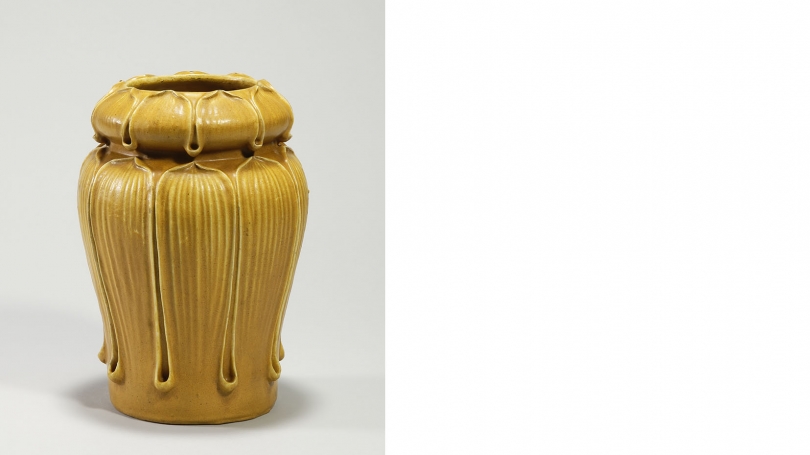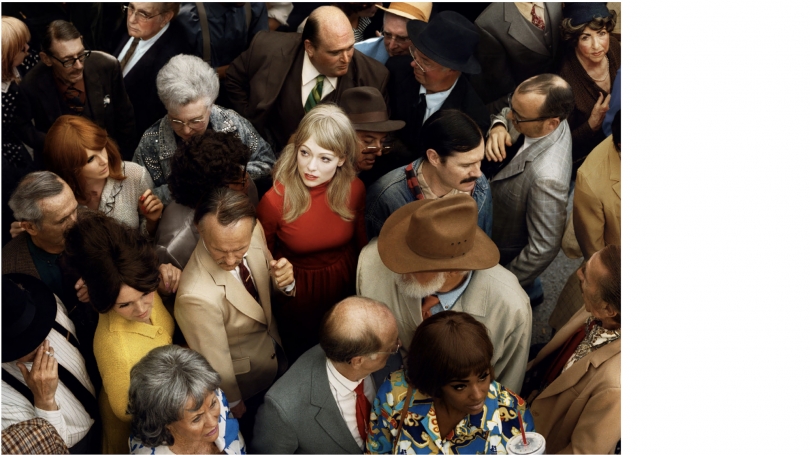The Hood Museum of Art has a great art collection. For over two hundred years Dartmouth College has attracted landmark donations from its alumni and other interested art enthusiasts. Now, as we celebrate Dartmouth's 250th anniversary, we aim to acknowledge the amazing objects in our possession and work toward building on this strong foundation. To do this, we have invited alumni gifts of significant works of art that will take the College collection to the next level. Together, the Dartmouth community is making the Hood, already among the best teaching museums in the country, a must-see destination for any serious art lover.
Dartmouth now has a beautiful structure for displaying art—everything from Japanese netsuke to enormous contemporary paintings look great in our new galleries. With Art for Dartmouth: Celebrating the 250th, the Hood Museum has sought to channel the bounty of goodwill that made the building renovation possible into renewed enthusiasm for the art collection at the heart of the museum. As part of this initiative over the past few years, the Hood Museum has received numerous gifts of true significance to the collection. Many of these will be featured throughout the fall of 2019 to celebrate the continuing passion of Dartmouth for the arts and of our alumni for their beloved college. Now our attention turns from where to display art for Dartmouth to what art Dartmouth displays.
There are several areas where the Hood Museum collection still can grow.
Those of you who know the collection will realize that the museum has many, many great works of art, from ancient Assyrian reliefs to contemporary video. In fact, sometimes when I mention this collecting initiative to alumni, I'm met with a question: "Isn't the Hood Museum's collection already top notch?" The answer is yes, absolutely, but not universally so. The challenge for the Hood is not that the museum is devoid of masterworks, but rather that we are faced with uneven quality in some areas or lack of depth in others. Many periods are very well covered, but as historians committed to representing the most complete story of art with the most compelling examples, we now look to fill a few gaps in the collection—gaps that can only realistically be filled with generous gifts.
To complement the great ancient Greek amphora by the Berlin Painter and other major examples of early ceramics, the Hood Museum would deeply benefit from at least one significant ancient Greek or Roman sculpture. The Italian Renaissance is wonderfully represented by panels from Pietro Perugino to Luca Giordano. These galleries sing, but their choir would be more complete joined by artists working at the same time in Germany, France, or Flanders.
Then there are modern galleries, replete with wonderful nineteenth-century academic paintings and sculpture, that would be enriched with comparative examples of the revolutionary responses by Impressionists and Post- Impressionists, including such recognized masters as Claude Monet, Camille Pissarro, Edgar Degas, and Paul Cézanne. Famously, the Hood Museum also has the great 1912 Cubist painting by Pablo Picasso, Guitar on Table, a gift of Nelson Rockefeller '30. It is even complemented by paintings from several of the leading Cubist artists working in Picasso's wake—including Fernand Léger and Jean Metzinger in France and Preston Dickinson and Oscar Bluemner in the United States. This is an area of strength for the collection. Now we seek the early twentieth- century counterpart to Picasso, Henri Matisse and his cohort. That the museum does not yet have a painting by Matisse is not surprising; it is, however, disappointing. We sincerely hope to one day find a remedy with gifts that represent the French Expressionist tradition from Paul Gauguin and Paul Sérusier to the later works of Pierre Bonnard and Jean-Édouard Vuillard.
In the area of postwar painting, the Hood Museum has a powerhouse collection that grows more inclusive every year. It stretches credulity that the museum's collection already includes such magnificent works by Adolph Gottlieb, Mark Rothko, Georges Dubuffet, Raymond Saunders, Alma Thomas, Ellsworth Kelly, Yayoi Kusama, and Alison Saar. We are well known for our masterwork of LA Pop by Ed Ruscha, Standard Station, Amarillo, Texas, 1963, and have recently acquired May Stevens's feminist icon Big Daddy Paper Doll, 1968. The addition of works by Andy Warhol, Roy Lichtenstein, Jasper Johns, or Robert Rauschenberg to round out these extraordinary works would truly propel the collection skyward.
Finally, in the arena of global contemporary art, we are fast becoming a leader in the field. With our classic (2003) El Anatsui sculpture now joined by a major Julie Mehretu painting, the Hood Museum collection represents some of the very best work being created today. Our commitment to the art of now remains a vital part of our activity and must do so on an ongoing basis. Our students, faculty, and community find deep resonance in contemporary works of art. This collection also offers a pathway into the world of art from all times and places.
Already, alumni have answered the call.
The process has begun. We dared to dream, to name our dream, and to work toward the fulfillment of all the promise that the College and the museum embody. Together, the Hood Museum of Art, Dartmouth, and its astounding alumni are making the Hood collection second to no other college or university collection. We invite you to come see our progress this fall and to join us in celebrating the 250th in a special Dartmouth manner—witnessing the generosity of our community.
John R. Stomberg
Virginia Rice Kelsey 1961s Director

